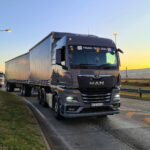Environmental impairment insurance unpacked
Environmental impairment insurance unpacked
There’s been an increase in environmental incidents, with hazardous goods carriers losing their loads. Bearing this – and the aftermath of the riots in 2021 – in mind, SHARNÉ LIEBENBERG investigates the subject further.
Environmental impairment liability insurance is a complex subject that is best left to the experts. Hence, I asked Sjanine Tanner, managing director of Envirosure, to provide an insight into this multifaceted field.
Certain businesses and industries are susceptible to environmental dangers simply because of what they do. What we are concerned about are those companies that have an “unexpected event” (typically those that aren’t “expected” to have incidents) and are then left exposed. An example would be the companies affected by the riots in KwaZulu-Natal in 2021. How can these clients protect themselves against these types of events?
There is, unfortunately, a mentality where businesses assume they will never have a spillage – that the commodities they store won’t require a clean-up. After all, they have never had a spillage before, and they run a good operation, thus how could they have a spillage?
Our legislation isn’t limited to large fuel/chemical manufacturers. It also applies to any product that could cause harm to the environment; the business will be obligated to remedy any spillage. The riots highlighted that sometimes these spillages are completely outside the control of the business; even though the acts of violence caused catastrophic environmental impacts, the businesses still had a duty of care to take all measures to contain spillages, reduce the impact, and rehabilitate the affected environment.
We always caution companies to be prepared for the worst-case scenario. Have the correct insurance in place, have spill response plans, ensure you take adequate measures to contain a spillage on your property, and train your staff on the procedures to follow. The riots additionally highlighted that environmental spillage is viewed as a consequential loss and will not be covered by SASRIA.
What products does Envirosure have for situations such as the riots, and what claims did you face after the riots?
Envirosure has our Riot and Strike Solution to cover these types of events. The bulk of the claims we experienced due to the riots were side tank fuel clean-ups due to trucks being torched.
Can you give us an explanation of the major differences in cover between a normal general liability product and the environmental liability product?
General liability sections often exclude environmental risks. A key area to highlight on this front is that there needs to be third-party damage for the liability section to respond. This will not cover any first-party damages (this refers to “own damage” or damage to property owned by the policyholder) and may potentially only be limited to damages to third-party property, injury, or death.
Environmental impairment cover offered by Envirosure covers first- and third-party clean-up costs, which include containment, cleaning up, and environmental rehabilitation. Environmental impairment is the bigger of the two exposures in our experience; by swiftly handling the spillage, you greatly mitigate the liability risk and reduce the cost of the claim. We do, however, offer a third-party liability extension to our cover, which if opted for can cover these losses.
What industries are most susceptible to risks related to environmental impairment?
All dangerous goods operations and those that store or transport potential pollutants are vulnerable. Our claims frequency is higher on the transport-based risks, but the magnitude of exposure will be higher for site-based risks.
What are the most common toxic or dangerous but unknown products (typically, those that one would never expect to be dangerous)?
Class 6 toxic substances are our higher-risk commodities, due to the toxic nature of the goods and the specialised rehabilitation required if we can rehabilitate the product. Alternatively, there is incineration disposal, which is extremely expensive. Unexpected products are generally food-grade products that are assumed to not cause any harm, such as cooking oil, alcohol, and milk.
When considering the legislation around these scenarios, what are the statutes and acts that influence the public, or to which we must pay attention?
We need to be familiar with the National Environmental Management Act, commonly referred to as NEMA.
On the back of the previous question, which types of claims are currently trending? Is there any specific risk or product risk not dealt with before now that is emerging or has become more prominent?
There are no specific trends when it comes to environmental-type losses, but we do note that certain commodities peak during certain times and around high demands (seasonal influences), such as fuel tankers around holiday seasons.
Side-tank claims are becoming more and more prominent as proper clean-ups are being enforced by means of appointing only those suppliers that are mandated, licensed, and approved in terms of legislation and insurer requirements. Another contributing factor is that the underlying heavy commercial vehicle policies exclude or limit their offerings.
What is the absolute worst claim that Envirosure has had to deal with since your business started? Is there any specific event that stands out?
Our largest claim to date was over R6 million for a diesel tanker that overturned into a river.
Published by
Sharné Liebenberg
focusmagsa




